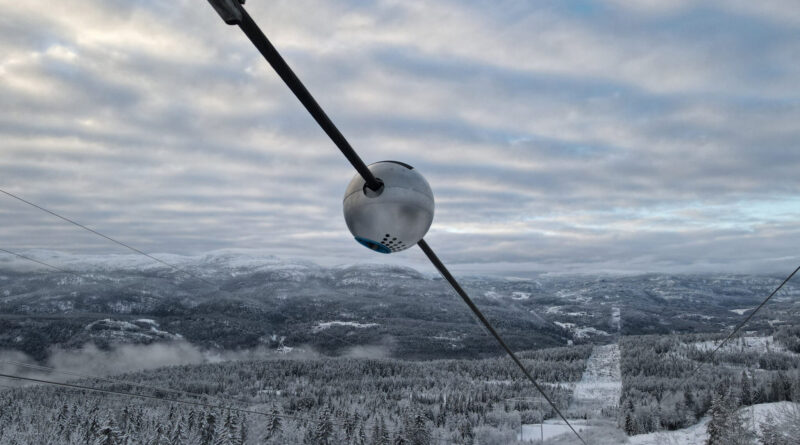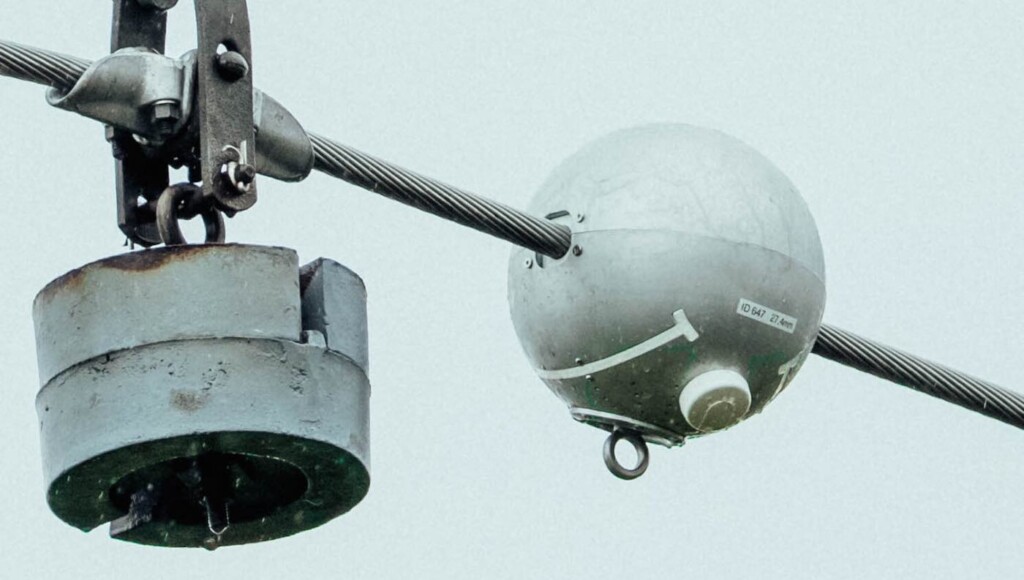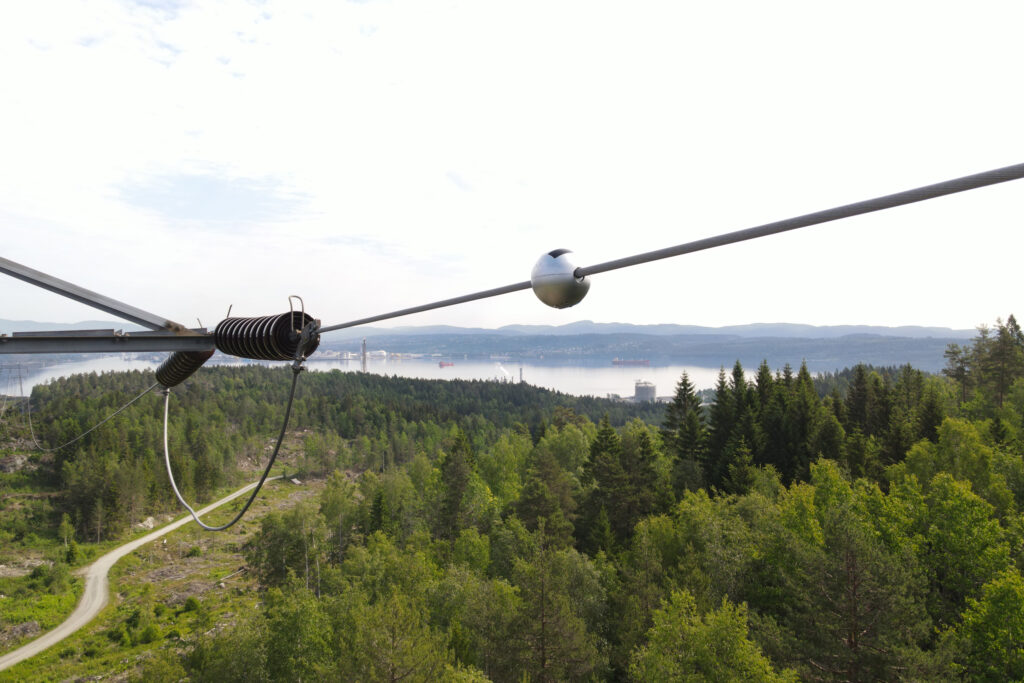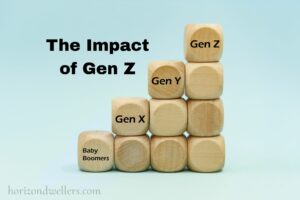In an era where energy demands continue to soar, the Heimdall “Magic Ball” emerges as a groundbreaking solution, poised to revolutionize the capacity of transmission lines across the globe. This innovative technology not only addresses the burgeoning need for efficient energy transmission but also promises a sustainable future in the energy sector.

Image by: Heimdall Power
Table of Contents
Heimdall Power's Neuron Sensor: Revolutionizing Power Distribution with Real-Time Monitoring

Image by: Heimdall Power
In the realm of electrical engineering and power distribution, the challenge of optimizing the capacity of existing infrastructure is monumental. Historical solutions often gravitated towards constructing new transmission lines to meet increasing demands for electricity—a solution not only exorbitant in cost but also in time and environmental impact. Heimdall Power of Norway, however, has introduced an innovative solution to this predicament with its development of the Neuron sensor, colloquially known within the industry as the “magic ball.”
The Neuron sensor embodies a paradigm shift in how utility companies can approach the dilemma of power transmission constraints. At its core, the Neuron is ingeniously designed to clasp around high voltage transmission lines, acting as a real-time monitor for the line’s temperature. Understanding the significance of this technology requires a deeper insight into the thermal dynamics of power lines.
Electrical currents, when transmitted through power lines, inevitably lead to heating of the conductors. This heating effect can limit the capacity of the line due to the risk of sagging, which poses safety hazards and reduces the efficiency and reliability of the electrical transmission. Traditionally, to ensure safety and maintain the integrity of the power network, operators have been conservative in their estimations of a line’s capacity, often underutilizing the potential throughput.
The Neuron sensor directly addresses this underutilization by providing accurate, real-time data on the thermal state of the transmission lines. By understanding the exact operating temperature of these lines, operators can dynamically adjust the current load to match the line’s actual capacity, which varies with weather conditions and other external factors. This dynamic load optimization can significantly enhance the efficiency of power transmission, allowing for an increase of up to 40% more electricity to be carried within the existing infrastructure.
This advancement represents not just a technical leap but a shift towards a more sustainable and cost-effective approach to electricity distribution. The construction of new high-voltage transmission lines is not only financially burdensome, with costs running into billions of dollars, but it also entails lengthy completion times—often spanning over a decade. Moreover, the environmental and societal impacts of new construction projects cannot be overlooked, making solutions that optimize existing assets more appealing.
The Neuron’s real-time temperature monitoring and the subsequent optimization of power line capacity is a remarkable example of how a seemingly minor technological innovation can generate significant benefits. For utility companies, this means enhancing the efficiency and longevity of their infrastructure, reducing the need for expensive new constructions, and ultimately, facilitating a more reliable and sustainable power distribution network.
Heimdall Power’s Neuron sensor showcases the transformative potential of leveraging technology to address complex challenges in the utility sector. By enabling existing power lines to carry more electricity safely and efficiently, the Neuron paves the way for a more adaptable and resilient power network, essential for meeting the growing demands of modern society.
What is a Heimdall Magic Ball?

Image by: Heimdall Power
Heimdall’s “magic ball” represents an advancement in grid management technology, engineered to enhance the efficiency of electricity transmission through real-time thermal monitoring. This sensor, approximately the size of a bowling ball and weighing eight pounds, can be deployed directly onto active high-voltage lines using UAVs (Unmanned Aerial Vehicles). Its operational principle involves harvesting electrical power from the transmission line it is monitoring to measure its temperature, thereby negating the need for an external power source.
Understanding the temperature dynamics of transmission lines is crucial for grid operators. As the load on a transmission line increases, so does its temperature, making temperature a reliable proxy for the line’s current load relative to its maximum capacity. Jørgen Festervoll, CEO of Heimdall, analogizes the temperature measurement to a speedometer for the electrical grid, where, without such data, operators are essentially navigating without real-time feedback, relying instead on historical or seasonal load estimates. This outdated approach leads to significant inefficiencies and underutilization of transmission capacity.
The advent of Heimdall’s “magic ball” provides operators with the data needed to dynamically adjust power flows based on real-time conditions rather than predetermined limits. This enables closer utilization of a line’s maximum capacity, thereby enhancing the transmission infrastructure’s efficiency and responsiveness.
The relevance of this technology has been increasingly recognized across Europe, and its adoption is beginning to take root in the United States. Great River Energy’s implementation of 52 “magic ball” sensors across Minnesota, following a successful pilot that showcased a potential increase in transmission capacity of up to 42.8%, underlines the technology’s impactful potential. This increase in capacity from 1 MW to 1.4 MW per line exemplifies a significant enhancement in transmission efficiency, which is pivotal in addressing capacity constraints and facilitating the expansion of renewable energy sources.
Heimdall’s emergence as a key player in the provision of grid enhancing technologies illustrates the growing industry focus on optimizing existing infrastructure to meet rising energy demands and integration of renewable energy resources. This order from Great River Energy marks a milestone in the U.S. market’s recognition of such technologies, underscoring Heimdall’s role in advancing grid efficiency and sustainability. With a workforce of about 50 and a customer base across 17 countries, predominantly in Europe, Heimdall is at the forefront of companies driving the adoption of grid enhancing technologies globally.
The Untapped Potential of Grid Enhancing Technologies in US Utilities: The Magic Ball & PJM (Pennsylvania-New Jersey-Maryland Interconnection)

Image by: Heimdall Power
The Research and Advocacy Group, RMI (Rocky Mountain Institute), has significantly highlighted the evolving landscape of Grid Enhancing Technologies (GET) and the comparative hesitance of US-based utilities in harnessing these advances. In a meticulously composed report from the previous month, RMI delves into how cutting-edge technology, metaphorically equated with “magic ball” devices from Heimdall, could revolutionize grid performances, especially within the PJM Interconnection – the largest grid domain in the United States.
GETs embody an intricate amalgamation of both hardware and software interventions, strategically designed to synergize with the extant transmission systems. The primary objective behind these technologies is to notably amplify the capacity, flexibility, and efficiency of the current grid infrastructure. These technologies, notably dynamic line ratings (DLRs), advanced power flow controls (PFCs), and topology optimization (TO), are not only gaining traction in the United States but also on a global scale. Notwithstanding their burgeoning adoption, RMI critiques their underutilization in critical utility planning paradigms, such as grid operators’ interconnection studies. The hallmark of GETs, as elucidated, lies in their cost-efficiency and expedient deployment compared to conventional transmission upgrades like reconductoring or reconstructive line work, paving the way for a more seamless integration of novel resources onto the grid.
RMI articulates an economic standpoint, underscoring the significantly higher financial inputs required in crafting new transmission lines vis-à-vis deploying grid enhancing technologies. Nonetheless, a nuanced perspective is offered, recognizing that GETs, in isolation, do not negate the necessity for constructing additional lines to satiate anticipated demand surges.
The inquiry into the subdued enthusiasm towards these sensor technologies in the US, despite their popularity in Europe, surfaces a compelling narrative. Chaz Teplin from RMI theorizes that a cautious approach towards managing the complexities introduced by additional monitoring and control mechanisms may partly explain the hesitance. However, he primarily attributes the lukewarm reception to the inherent business model of utilities, which inherently favors investments into substantial assets. This model predicates on a regulated earning scheme where utilities recoup their expenditures along with a guaranteed margin of profit from their consumers.
This paradigm, as Teplin articulates, inadvertently disincentivizes low-cost investments despite their substantial value proposition because they do not significantly enhance the capital base, which forms the bedrock of utility profits. He asserts the necessity for a recalibration of financial incentives by regulators and regional grid managers to address this misalignment and foster a conducive environment for the adoption of GETs.
The discourse around GETs, as navigated by RMI, underscores a pivotal juncture in utility management and infrastructure development. Addressing the highlighted impediments could catalyze a transformative shift towards more resilient, efficient, and adaptable grid systems, aligning with future demands and sustainability goals.
The RMI report on Grid-Enhancing Technologies (GETs) provides a nuanced look into how these innovations are reshaping the dynamics of power transmission for utility companies. The findings underscore a significant variation in the efficacy of GETs based on temporal factors – specifically, the time of day and month. During overnight hours in November, gains reported by utility companies utilizing GETs were marginal, often in the single-digit range. Contrastingly, gains during daylight hours in April soared to more than 30%. This discrepancy is deeply intertwined with the operational patterns of renewable energy sources, particularly solar farms, which achieve peak production during daylight. Consequently, the demand for maximizing grid capacity becomes most critical during these hours to accommodate the influx of solar-generated electricity.
This variance in utility gains underscores a broader principle in the realm of energy transmission: the capacity to transmit electricity is not constant but influenced by a myriad of factors, including environmental conditions. Air temperature and wind levels, for instance, are pivotal. Cooler air temperatures and stronger winds play a dual role in enhancing the efficiency of transmission lines. They facilitate cooling, thereby allowing the lines to conduct more electricity without overheating. However, the inherently fluctuant nature of these environmental factors means that the benefits of installing GETs are not uniformly realized throughout the year or even within a single day.
The introduction of technologies like the Heimdall “magic ball” heralds a strategic pivot in grid management. These devices furnish grid operators with critical data, enabling them to maximize the throughput of existing transmission infrastructure. By providing real-time insights into how environmental conditions affect transmission capacities, operators can optimize the flow of electricity to match demand dynamically.
Inside Climate News posits that wind and solar plant operators stand to gain considerably from such advancements. GETs, exemplified by the Heimdall technology, essentially expand the bandwidth of the power transmission “highways.” By efficiently managing the flow of electricity, these technologies mitigate congestion issues, reminiscent of opening new lanes on a highway. This analogy extends to the prioritization mechanism for utilizing the additional capacity. Renewable power sources, chiefly wind and solar, would naturally assume priority in this expanded infrastructure. Their operational cost-efficiency makes them the preferred choice over more expensive and less environmentally friendly alternatives, such as coal.
The RMI report illuminates the complex interplay between various factors influencing the performance of GETs. Environmental conditions, time of day, and energy source type are crucial determinants of how much electricity can be transmitted through the grid. Technologies like the Heimdall “magic ball” offer a promising avenue for optimizing these variables, significantly benefiting renewable energy sources. As these technologies mature and gain wider adoption, they could play a pivotal role in the transition towards a more sustainable, efficient, and resilient energy infrastructure.
Video: Heimdall - Magic Ball Installation
Conclusion
The adoption of grid enhancement technologies presents a notable opportunity to transform the way electricity is distributed and consumed, particularly with an increasing focus on renewable energy sources such as wind and solar power. These technologies can potentially streamline the integration of such renewable resources into the existing grid without necessitating the construction of new transmission lines. This approach not only showcases a leap toward sustainability but also promises significant economic benefits for utility ratepayers.
Chaz Teplin from RMI (Rocky Mountain Institute), a renowned energy and environment-focused organization, points out that the utilization of grid enhancement technologies is likely to result in considerable cost savings for consumers. The core idea here is simple yet powerful: by enabling the grid to handle more renewable energy more efficiently, these technologies can reduce the need for expensive infrastructure projects, which, in turn, would lead to lower electricity costs.
Despite the clear advantages, the widespread implementation of these technologies is far from reality. This contradiction underscores a fundamental issue within the regulatory framework governing utilities, particularly those that are investor-owned. The current model incentivizes the construction of new infrastructure. Under this system, utilities earn a fixed return on investment for every project, as predetermined by regulators. Consequently, there’s a built-in motivation to keep building — whether it’s new generating stations or transmission lines — because that directly translates to higher earnings.
The problem with this model is that it rarely aligns with the objective of reducing costs for consumers. Since building more means earning more, utility companies often overlook strategies that could save money for their customers, such as investing in grid enhancement technologies. This glaring oversight in regulatory design not only stalls the progress towards more efficient and sustainable energy distribution models but also burdens ratepayers with unnecessary costs.
The scenario paints a vivid picture of a regulatory system in dire need of reform. The challenge lies in altering the entrenched financial incentives that guide utility investments away from consumer-friendly and environmentally sustainable alternatives. Encouraging utilities to adopt technologies that facilitate the delivery of renewable energy in a cost-effective manner requires a shift in how their financial success is measured and rewarded. Without a significant recalibration of these incentives, the full potential of grid enhancement technologies — and the broader transition to renewable energy — risks remaining untapped, with consumers continuing to bear the brunt of an outdated and inefficient system.
FAQs: Heimdall "Magic Ball" Increases Transmission Line Capacity
The Heimdall “Magic Ball” is an innovative technology designed to increase the electrical transmission line capacity. It uses advanced materials and engineering to manage and enhance the flow of electricity more efficiently, allowing for more power to be transmitted over existing infrastructure.
The technology works by improving the conductivity and reducing the resistance in power lines. It does so through a combination of electromagnetic fields and smart grid technologies. This results in an increased capacity for power transmission without the need for constructing new lines.
Yes, the beauty of the Heimdall “Magic Ball” is its versatility. It is designed to be retrofit on existing transmission lines, making it a cost-effective solution for utility companies looking to enhance their grid’s capacity with minimal infrastructure change.
The key benefits include:
- Increased transmission capacity, allowing for more renewable energy integration.
- Reduced congestion in power lines, leading to fewer energy losses.
- Avoidance of substantial costs and environmental impacts associated with building new transmission lines.
- Improved grid resilience and reliability.
By increasing the capacity of transmission lines, the Heimdall “Magic Ball” allows for a greater amount of renewable energy to be integrated into the grid. This makes it easier to manage the variability and geographic spread of renewable energy sources like wind and solar.
No, one of the advantages of this technology is that it can be installed with minimal disruption to current services. Installations are quick and do not require lengthy outages or significant modifications to existing lines.
The installation time can vary depending on the specifics of the project, such as the length of the transmission line and access to the site. However, installations are generally designed to be fast and efficient, often completed within a few days.
The Heimdall “Magic Ball” is built to last, with an expected lifespan that aligns with or exceeds that of current transmission line components. It is designed to withstand environmental conditions and maintain its performance over time.
By enhancing the efficiency of power transmission, reducing losses, and enabling more renewable energy sources, the Heimdall “Magic Ball” helps to lower overall energy costs. These savings can then be passed down to consumers in the form of lower electricity bills.




























